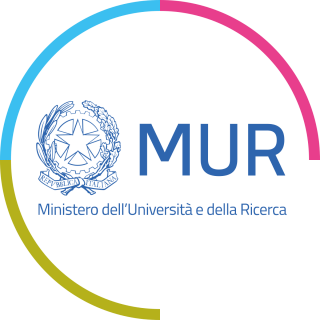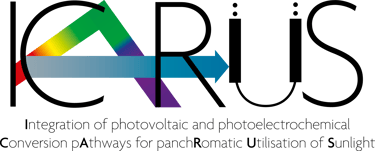The research project
ICARUS
The general objective of ICARUS is strategic to Europe’s ambition and long-term vision of becoming independent on fossil fuels while strengthening its leadership in renewable energy and hydrogen technologies. ICARUS aims at developing one of the next generation technologies that will represent the pillars of the clean energy transition targeted to achieve carbon neutrality by 2050.
The scientific aim of ICARUS is to boost the efficiency of solar energy conversion and the economic sustainability of green hydrogen through the simultaneous, synergic production of electric power and solar hydrogen, entirely from sunlight and water. This ambitious goal will be achieved through the smart integration of photoelectrochemical (PEC) water splitting and photovoltaic (PV) power generation, using a spectrum-splitting dichroic system to concentrate short-wavelength solar radiation onto the PEC reactor, while transmitting long-wavelength photons to the PV module. This approach guarantees a panchromatic use of sunlight with optimized spectral quantum efficiency. ICARUS will build a prototype to validate the technology in a relevant environment; the system will integrate hydrogen storage at near ambient conditions using a metal hydride reservoir.
The project will bring a pivotal contribution to the clean energy transition by addressing the topic of "Hybrid-RES solutions” in Call Module 03A, which focuses on electricity generation combined with clean energy carriers.
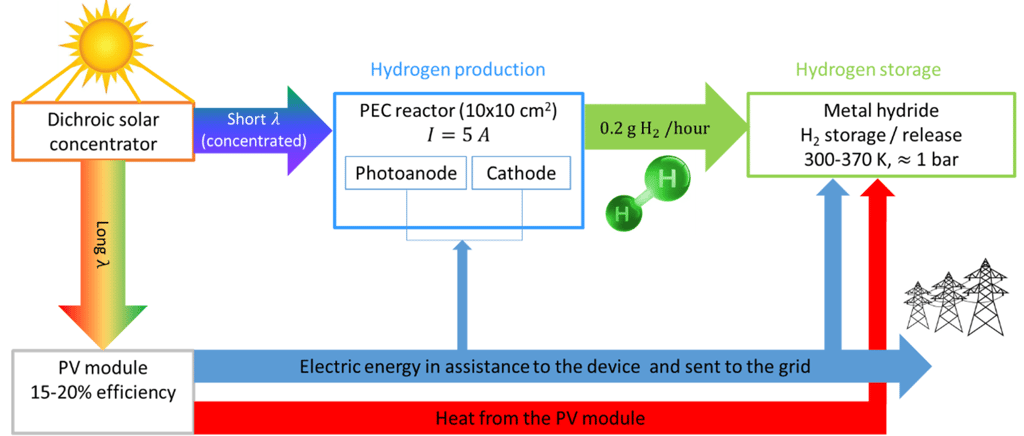

Energy conversion and storage processes devised in ICARUS.
Work Packages and their Objectives
• Develop a software tool optimizing the spectral splitting of incoming solar radiation
• Develop a solar concentrator based on a dichroic cold mirror with optical efficiency higher than 90% capable of splitting the incoming radiation in a converging beam and a transmitted beam which is eventually diverted onto a PV module.
• Characterize and optimize the optical configuration of the solar concentrator in order to improve the optical efficiency up to 95% on the direct normal radiation, keeping a design-for-manufacturing and design-to-cost approach.
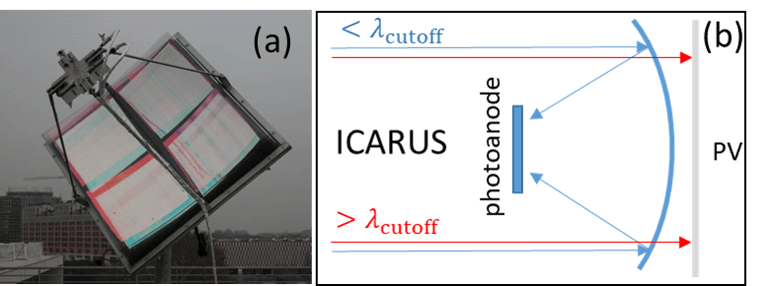

WP1 : Dichroic solar concentrator (UNIFE)
WP2 : Photovoltaic module (CEA)
• Fabricate perovskite solar cells
• Optimize chemical composition of perovskite solar cells according to photoanode requirements
• Fabricate the perovskite PV module
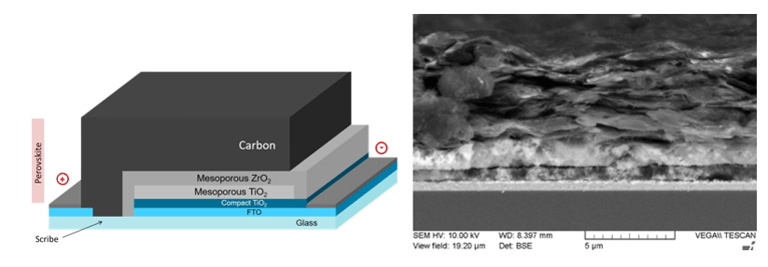

WP3 : Semiconductor Photoanodes (BGU)
• Fabricate and optimize earth-abundant n-type semiconductor photoanodes and dark cathodes
• Characterize the (photo)electrochemical performance and stability of the photoanodes
• Scale-up selected photoanodes to 5x5 cm2 active area
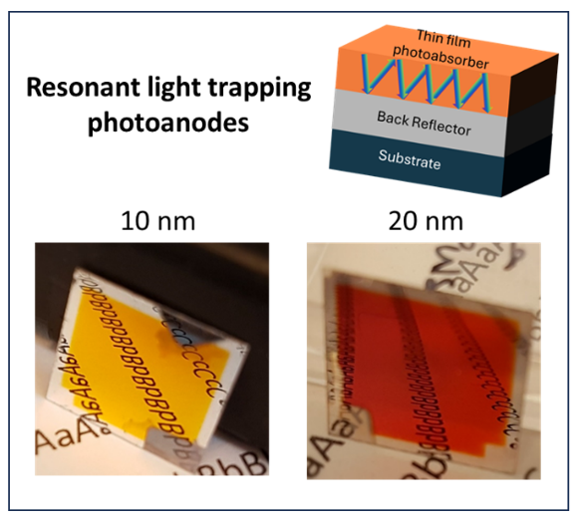

WP4 : Photoelectrochemical reactor (UNIBO)
• Design and realize a PEC reactor,10x10 cm2 active area, using photoanodes developed in WP3
• Minimize resistive contributions by acting on the ohmic support, thickness of electrode compartment, conductivity of the electrolyte, nature and properties of the ion exchange membrane
• Test the reactor in the lab under simulated radiation for optimizing its design and operational point
WP5 : Hydrogen storage (UAM)
• Select suitable AB2 and AB intermetallic compounds (A=Ti, B= Mn, Cr, Fe) for near ambient temperature and low pressure H2-storage
• Characterise the thermodynamic and kinetic properties of the selected compounds.
• Design, implement and characterize the hydrogen storage unit
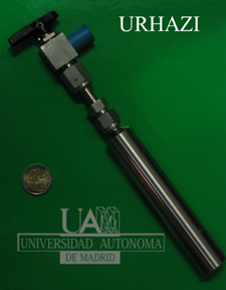

WP6 : Test of ICARUS demonstrator (UNIBO)
• Perform the necessary engineering tasks to properly and safely assemble the ICARUS demonstrator and put it in operation
• Test the ICARUS demonstrator in a relevant environment in terms of solar-to-hydrogen efficiency and operational stability
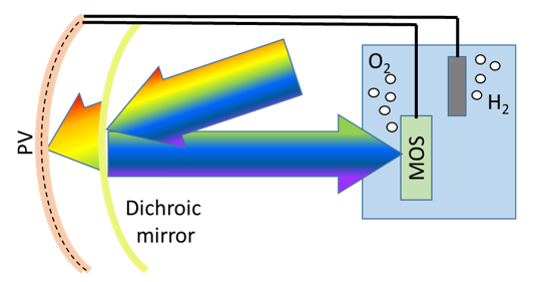

WP7 : Dissemination, Communication, and Exploitation (CEA)
• Increase public awareness
•Manage the collective impact of the consortium throughout the project by evaluating the market potential and determining product opportunities, identifying and managing individual and collective opportunities for exploitation of the project results
WP8 : Techno-economic, social, and environmental analysis (UNIBO)
• Conduct the techno-economic analysis of ICARUS components considering yield, production/storage rates and economic indicators (CAPEX, OPEX)
• Quantify the life cycle environmental performance using up-to-date environmental LCA methodologies
• Evaluate the social acceptance by studying the state of mind (expectations, fears or potential opposition) associated with the ICARUS project among local stakeholders
WP9 : Reporting and knowledge community (RKC) activities (UAM)
• Enhance reporting
• Facilitate knowledge sharing and formation
• Promote informed decision-making
ICARUS Project
This research was funded by CETPartnership, the Clean Energy Transition Partnership under the 2023 joint call for research proposals, co-funded by the European Commission (GA N°101069750) and with the funding organizations detailed on https://cetpartnership.eu/funding-agencies-and-call-modules.
© 2024. All rights reserved.




